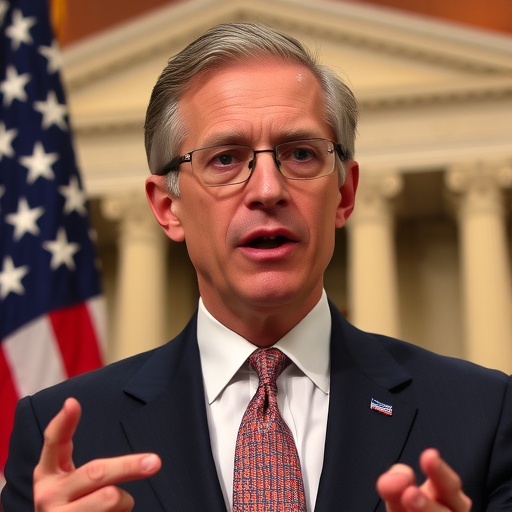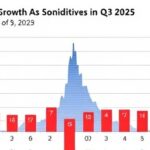In a candid revelation that has sent ripples through financial markets, US Treasury Secretary Scott Bessent has openly admitted that certain sectors of the American economy are already grappling with recessionary pressures. Speaking at a high-profile economic forum in Washington D.C., Bessent singled out the housing market as the epicenter of this downturn, directly attributing the malaise to the Federal Reserve’s prolonged tight monetary policies. His call for accelerated interest rate cuts underscores growing concerns about the broader US economy teetering on the edge of a full-blown recession.
Bessent’s remarks come at a pivotal moment, as inflation has cooled but economic growth indicators show mixed signals. The housing market, a bellwether for consumer health, has been battered by soaring mortgage rates that have stifled demand and frozen inventory. With home sales plummeting to levels not seen since the 2008 financial crisis, Bessent’s admission highlights the urgency for policy intervention to prevent spillover effects into other areas like consumer spending and employment.
Bessent’s Direct Critique of Federal Reserve’s Rate Strategy
US Treasury Secretary Scott Bessent did not mince words when addressing the Federal Reserve’s role in the current economic strain. In his keynote address, he stated, “The Federal Reserve’s commitment to aggressive rate hikes has undoubtedly tamed inflation, but at a steep cost to sectors like housing that are now in outright recession.” This blunt assessment marks a rare public divergence between the Treasury and the central bank, typically aligned on macroeconomic goals.
Bessent elaborated that the Fed’s federal funds rate, held steady at 5.25-5.50% for over a year, has created a chokehold on borrowing costs. Mortgage rates, which track the 10-year Treasury yield influenced by Fed actions, have hovered above 7% since mid-2023, deterring potential homebuyers and builders alike. According to recent data from the National Association of Realtors, existing-home sales dropped 19% year-over-year in the third quarter, marking the steepest decline in decades.
The Treasury chief’s comments echo sentiments from economists who argue that the Fed’s data-dependent approach has been too rigid. Bessent emphasized that while core inflation has fallen to 3.2% from a peak of 9.1% in 2022, the collateral damage to the US economy‘s real estate pillar is undeniable. He warned that without prompt relief, the recession in housing could cascade into manufacturing and retail, amplifying risks to overall GDP growth projected at a modest 1.8% for 2024 by the IMF.
Housing Market’s Deep Dive into Recessionary Territory
The housing market’s woes have become the starkest symbol of the US economy‘s vulnerabilities under current Federal Reserve policies. Scott Bessent’s acknowledgment that this sector is “already in recession” aligns with a barrage of grim statistics painting a picture of stagnation and contraction. New home construction starts fell 8.8% in August alone, per US Census Bureau figures, while the Case-Shiller Home Price Index showed a 0.2% month-over-month decline in major metros like San Francisco and Seattle— the first such drop since 2012.
High interest rates have not only sidelined buyers but also locked in existing homeowners with sub-4% mortgages from the pandemic era, leading to what experts call a “lock-in effect.” This has slashed housing inventory to a 3.5-month supply, far below the balanced 5-6 months needed for a healthy market. In turn, builders like D.R. Horton and Lennar have reported surging cancellations and delayed projects, with the National Association of Home Builders’ confidence index plummeting to 42 in September, its lowest since the early days of the COVID-19 pandemic.
Bessent highlighted how these dynamics are exacerbating affordability issues, with the median home price at $412,300— up 4.2% annually— but out of reach for 70% of first-time buyers due to elevated rates. Regional disparities are stark: Sun Belt states like Florida and Texas, once booming, now face oversupply and price corrections, while Rust Belt cities see foreclosures ticking up by 10% year-over-year. The Treasury Secretary’s focus on housing underscores its multiplier effect; a weak housing market typically drags down 15-20% of economic activity through related industries like appliances, furniture, and construction employment, which has already shed 25,000 jobs since January.
Moreover, commercial real estate tied to housing, such as mortgage lending and title insurance, is feeling the pinch. Banks holding $2.7 trillion in residential mortgages report rising delinquencies, albeit still low at 3.8%. Bessent’s recession label for housing isn’t hyperbole; it’s a sector where output has contracted for six straight quarters, per Federal Reserve Economic Data (FRED), signaling a technical recession by traditional metrics of two consecutive quarters of negative growth.
Urgent Push for Federal Reserve Rate Cuts to Stabilize US Economy
In a bold policy prescription, Scott Bessent urged the Federal Reserve to accelerate rate cuts, arguing that the time for caution has passed. “We need the Federal Reserve to pivot faster— perhaps 50 basis points at the next meeting— to inject vitality back into the US economy and avert a deeper recession,” he declared. This plea comes as Fed Chair Jerome Powell has signaled only gradual easing, with markets pricing in a mere 25 basis point trim in November following September’s initial cut.
Bessent’s advocacy for swifter action is rooted in forward guidance from Treasury models, which project that sustained high rates could shave 0.5 percentage points off GDP growth by mid-2025. He pointed to labor market resilience— unemployment at 4.1% and nonfarm payrolls adding 254,000 jobs in September— as evidence that inflation fears are overblown, allowing room for monetary easing without reigniting price pressures. The Treasury Secretary also invoked international comparisons, noting that the European Central Bank has already cut rates twice this year amid similar cooling inflation, helping to stabilize their housing markets.
Wall Street reacted swiftly to Bessent’s comments, with the 10-year Treasury yield dipping 5 basis points to 3.78% and mortgage rates easing slightly to 6.95%. Bond traders interpret this as a signal of potential Treasury-Fed coordination, reminiscent of past interventions during the 2008 crisis. However, critics within the Fed, like Governor Michelle Bowman, have cautioned against premature cuts, citing sticky services inflation at 5.1%. Bessent countered that the housing market’s recession demands prioritizing real economy signals over headline CPI figures.
To bolster his case, Bessent referenced fiscal tools at the Treasury’s disposal, including potential expansions of affordable housing tax credits under the Inflation Reduction Act. Yet, he stressed that monetary policy remains the Fed’s domain, and delays could cost the US economy dearly in lost productivity and consumer confidence, which dipped to 98.7 in October per the Conference Board.
Expert Voices and Broader Recession Fears Grip Financial Circles
Scott Bessent’s recession admission for key sectors has ignited a firestorm of debate among economists and market watchers, amplifying fears for the wider US economy. Prominent voices, including Nobel laureate Paul Krugman, praised the Treasury Secretary’s candor, tweeting, “Bessent is right— the Federal Reserve’s hawkishness is starving housing of oxygen, risking a contagion effect.” Conversely, hawkish analysts at Goldman Sachs warned that rushed cuts could undo inflation progress, potentially leading to a wage-price spiral.
Surveys reflect the unease: A Reuters poll of 80 economists found 60% now see a 40% chance of US recession by year-end, up from 25% in July, largely due to housing’s drag. The sector’s recession is already manifesting in related data; retail sales for home goods fell 2.1% in August, and auto sales— often financed alongside home purchases— slowed to a 15.6 million annualized pace. Bessent’s blame on the Federal Reserve resonates with small business owners, as the NFIB Optimism Index hit a 50-year low of 91.3, citing high borrowing costs as the top concern.
Globally, the implications are profound. A faltering US housing market could dampen demand for imports, affecting trading partners like Canada and Mexico, whose economies are intertwined via NAFTA. Investors are hedging bets; the VIX fear index spiked 12% post-Bessent’s speech, while safe-haven assets like gold surged to $2,650 per ounce. Think tanks such as the Brookings Institution have modeled scenarios where delayed Fed action leads to a 1.2% GDP contraction in 2025, with unemployment climbing to 5.5%.
Bessent’s intervention also spotlights political dimensions ahead of the 2024 elections. With housing affordability a voter flashpoint— 62% of Americans in a Gallup poll cite it as a top issue— the Treasury’s push could pressure the Fed to align with administration goals. Yet, independence remains sacrosanct; Powell has reiterated that decisions are apolitical, based on dual mandate of price stability and maximum employment.
As discussions intensify, the spotlight turns to the Fed’s October meeting minutes, due next week, for hints of internal debates on rate trajectories. Bessent’s warnings serve as a clarion call, urging policymakers to act decisively against the encroaching shadows of recession in the US economy.
Looking ahead, the path forward hinges on coordinated efforts between the Treasury and Federal Reserve. If rate cuts materialize as Bessent advocates, the housing market could see a thaw by spring 2025, with increased inventory and buyer activity boosting overall economic momentum. Failure to respond, however, risks entrenching sectoral recessions into a national one, testing the resilience of America’s post-pandemic recovery. Stakeholders from Wall Street to Main Street are watching closely, as the next moves could define the US economy’s trajectory for years to come.









